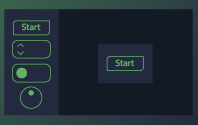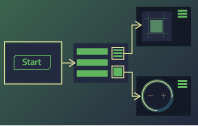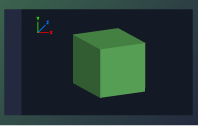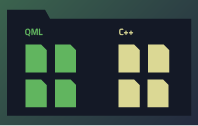Use cases
The following table summarizes the main use cases of Qt Design Studio with links to more information:
|
|
|
|
| Creating UI wireframes | Creating UI prototypes | Combining 2D and 3D assets | Cooperating with developers |
| Create a UI concept by using preset and custom 2D and 3D components and designing application flows. Create scalable layouts with all your screens and controls in place. | Create an animated UI prototype with functioning UI controls and logic and validate it on the desktop or mobile or embedded devices. | Create 2D and 3D assets and design UIs in imaging and design tools. Then bring your designs over to Qt Design Studio where you can combine them into one UI. | Use visual editors that generate the code for you and deliver the code to developers for adding more code and preparing the application for production. You can use version control to pass changes back and forth when necessary. |
| Wireframing | Prototyping | Asset creation with other tools | Implementing applications |
Available under certain Qt licenses.
Find out more.





